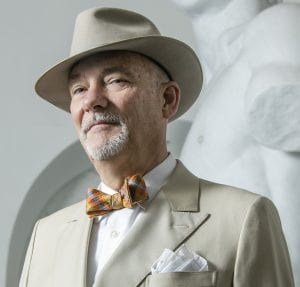 The most important thing about today’s student free speech decision is not that the plaintiff “dropped F-bombs” in Snapchat posts, nor is that she was a disappointed cheerleader. In deciding for the student, the Court rejected a dangerous claim for sweeping power over students’ off campus lives. The decision (Mahanoy v. B.L.) was unfortunately less than clear about when schools are permitted to control off campus speech.
The most important thing about today’s student free speech decision is not that the plaintiff “dropped F-bombs” in Snapchat posts, nor is that she was a disappointed cheerleader. In deciding for the student, the Court rejected a dangerous claim for sweeping power over students’ off campus lives. The decision (Mahanoy v. B.L.) was unfortunately less than clear about when schools are permitted to control off campus speech.
Here’s what the case is about. Disappointed that she didn’t make the varsity cheerleading squad, Brandi Levy posted a photo of herself and a friend on Snapchat (Snapchat is an app where your posts disappear shortly after they are viewed). The post had a picture of Brandi and her friend giving the finger to the camera. The caption said: “fuck school fuck softball fuck cheer fuck everything.” The school kicked Brandi off the junior varsity cheerleading squad for the year.
The school claimed a broad right to control off campus, off hours student speech. As long as the speech was “directed” at the school and “disruptive,” the school could police it. As the Court said, that would essentially give schools 24 hour regulatory authority over student speech. The Court rejected that.
Levy, argued that generally students’ off campus speech should be treated like anyone else’s speech; if the government wants to punish someone for what they say, it must prove it needs to do that to advance the most important of government interests. Most critically, it cannot punish because some listeners are upset, even very upset, by the message. Levy conceded that over some activities tied to school—online learning, use of school online resources, etc.—the school should have much greater power to regulate.
The Court didn’t buy Levy’s approach either. It might be, the Court said, that schools should have regulatory authority over severe bullying, threats to teachers and other students, off campus cheating on exams and papers. However, the Court told us, it was not going to lay down any “highly general” First Amendment rules about when ordinary first amendment standards “give way” in deference to the need of schools to educate and protect the members of its community.
As examples of things that government should be able to regulate, the Court’s examples make sense; it’s the Court’s explanation that isn’t much help. Far from refraining from “highly general” rules about the regulation of speech, the Court doesn’t give us any rules at all. Bullying, threats, cheating—can the government intervene with these because it should be able to do that regardless of whether schools are involved or because, as with on campus speech, the schools ought to have much greater authority over them. It matters. The latter, as a practical matter, will give schools a lot more control over student speech.
The Court hasn’t used its basic framework for analyzing freedom of speech in schools cases. It also hasn’t come up with a model for analyzing speech in schools. Instead, it has come up with a few rules over the years, which, though at first quite protective of student expression, have become much less protective in the last 35 years. Those rules won’t translate to off campus speech very well.
Without some kind of analytic structure and with no rules from today’s case, schools and students are almost as much in the dark about what schools can or can’t do about off campus speech as they were before. Dissenting, Justice Thomas calls this a “common-law” approach to the problem; a narrow ruling for one case. The Supreme Court, though, is not a trial court. Its primary job isn’t to decide who wins a particular case; instead, its role is to tell the rest of us what the Constitution requires. The Court hasn’t been doing a very good job on that with student speech.
